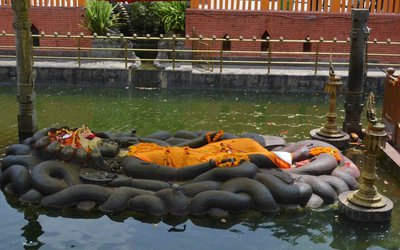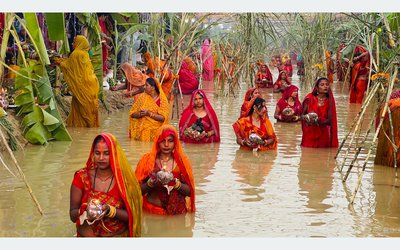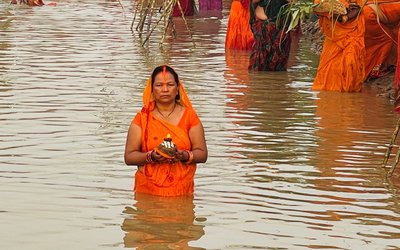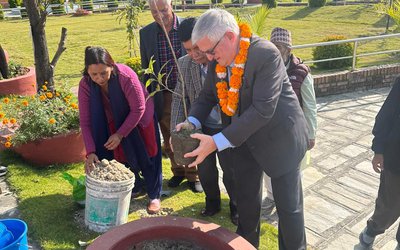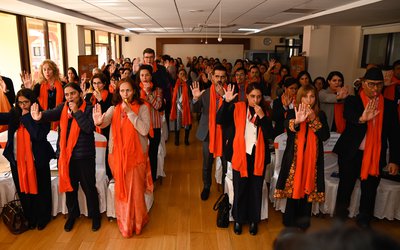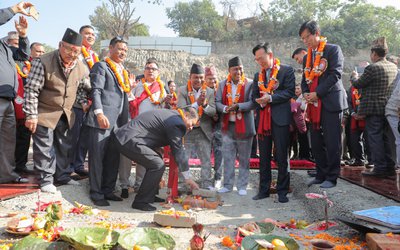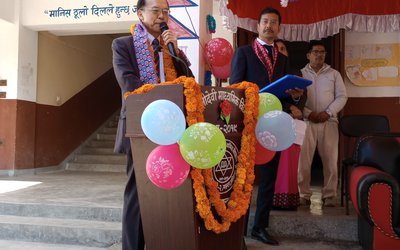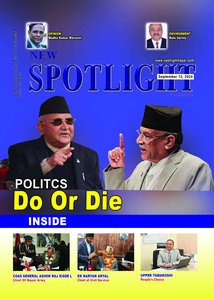
Considered to be the eighth avatar of Vishnu, Lord Krishna's birthday is celebrated on the eighth day of the Krishna Paksha in the month of Shravan all over Nepal and India.
In Kathmandu, devotees visit Lord Krishna’s temple in Patan and devotees also pay visit to other Krishna Temples. There will be a special program in Iscon Temple in Budhanilkantha.
Devotees of Lord Krishna celebrate the Blue God's birth across the world. Considered to be the eighth avatar of Vishnu, Lord Krishna's birthday is celebrated on the eighth day of the Krishna Paksha in the month of Shravan.
An important festival, particularly to the Vaishnav tradition of Hinduism, Krishna Janmashtami is celebrated widely across places like Manipur, West Bengal, Assam, Odisha, Rajasthan, Gujarat, Tamil Nadu, among other places, it is the major festival of Vrindavan and Mathura, where Lord Krishna was born and raised respectively. Krishna Janmashtami is on August 24 in 2019.
In Maharashtra and other western states in India, the legend is played out by the community, where pots of yoghurt are hung high up and teams of youth called the "Govindas" go around to these localities with hanging pots, climb one over another and form a human pyramid, then break the pot. In Mumbai, the festival has taken on the garb of a competition among various mandals as well, each trying to outdo the other. Cash and gifts are offered to the winning Govinda teams.
Gujarat: People in Dwarka, Gujarat, where Krishna had established his legendary kingdom celebrate with a festival similar to Dahi Handi but call it Makhan Handi. Others perform folk dances at temples, sing devotional songs, visit Dwarkadhish Temple or Nathdwara to celebrate the day.
North India: Janmashtami is the largest festival in the Braj regon of north India in cities such as Mathura and Vrindavan. Notably, it is believed that Krishna was born in Mathura and raised in Vrindavan. Vaishnav communities here and in Rajasthan, Delhi, Haryana, Uttarakhand and Himalayan north celebrate Janmashtami with much pomp and splendour.
East and Northeast India: The widespread tradition of worshipping Krishna in these regions stems from the efforts and teachings of 15th and 16th century Sankardev and Chaitanya Mahaprabhu. Performance arts such as Ankia Naat, Sattriya, Borgeet and Bhakti yoga are celebrated in West Bengal and Assam while people in Manipur developed Manipuri dance form, a classical dance form known for its Hindu Vaishnav themes which is showcased on the day. In Odisha and in Nabadwip, West Bengal, the festival is also referred to as Sri Krishna Jayanti or simply Sri Jayanti.
South India: In Tamil Nadu, people decorate the floor with kolams, while Geetha Govindam and other such devotional songs are sung in praise of Krishna. Devotees draw footprints of Krishna from the threshold of the house till the altar room, which depicts the arrival of Krishna into the house.
In Andhra Pradesh, recitation of hymns and devotional songs are the characteristics of this festival. Another unique feature of this festival is that young boys are dress up as Krishna and they visit neighbors and friends. Different varieties of fruits and sweets are first offered to Krishna and after the puja, these sweets are distributed among the visitors.
Outside India: Places like Nepal, Bangladesh, Fiji and Pakistan too celebrate Janmashtami, while ISKCON temples around the world too celebrate the day
- Kosovo’s Officials Exchanged Insights Regarding Local Governance In Nepal
- Nov 26, 2024
- Israeli Ambassador Pays Tribute To B.P. Koirala Following Credential Presentation
- Nov 26, 2024
- UN Nepal Kicks Off 16 Days Of Activism
- Nov 26, 2024
- KOICA Provides Grant For The Construction of 150 Bed In Nepal Korea Friendship Hospital In Thimi
- Nov 26, 2024
- Japan Hands Over The Girls’ Hostel To Shree Kali Devi Secondary School
- Nov 26, 2024

